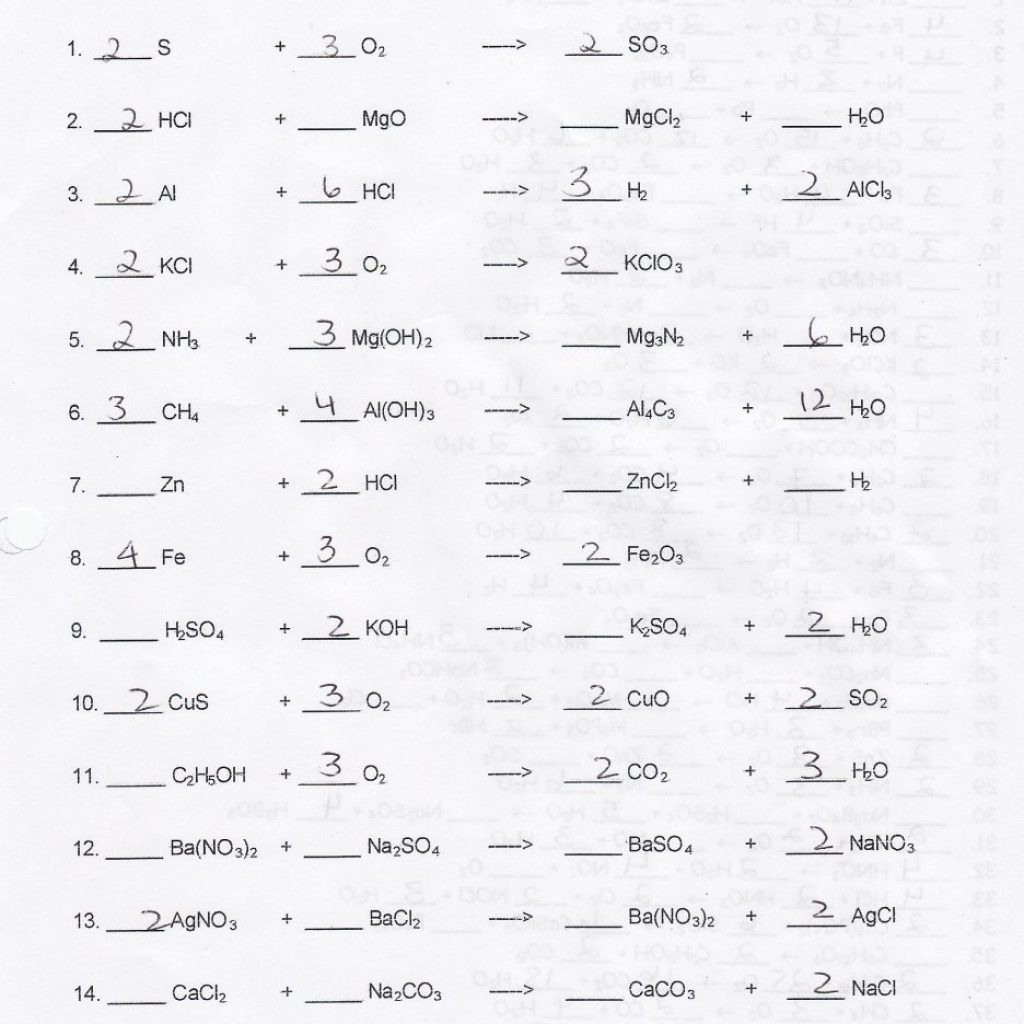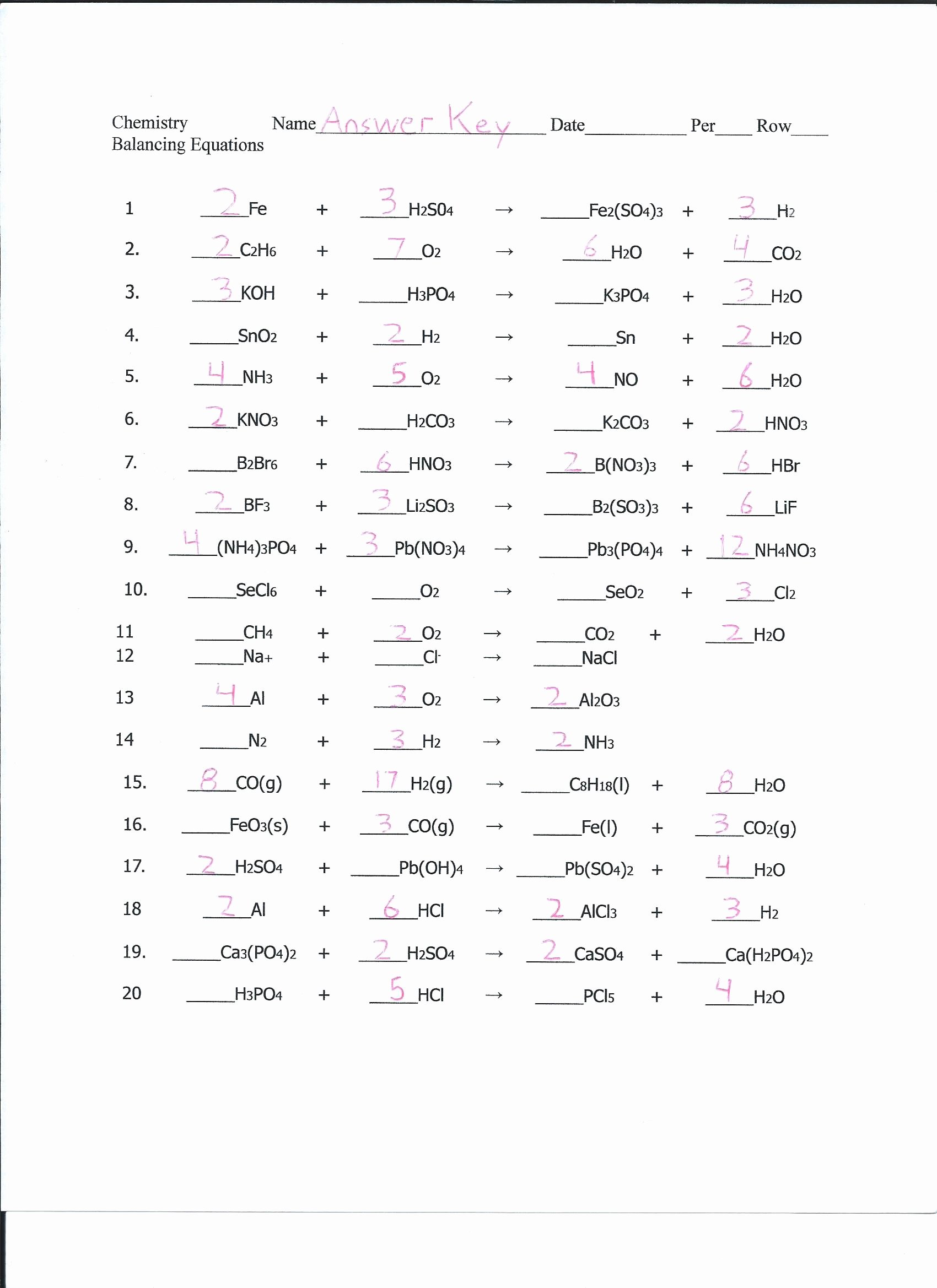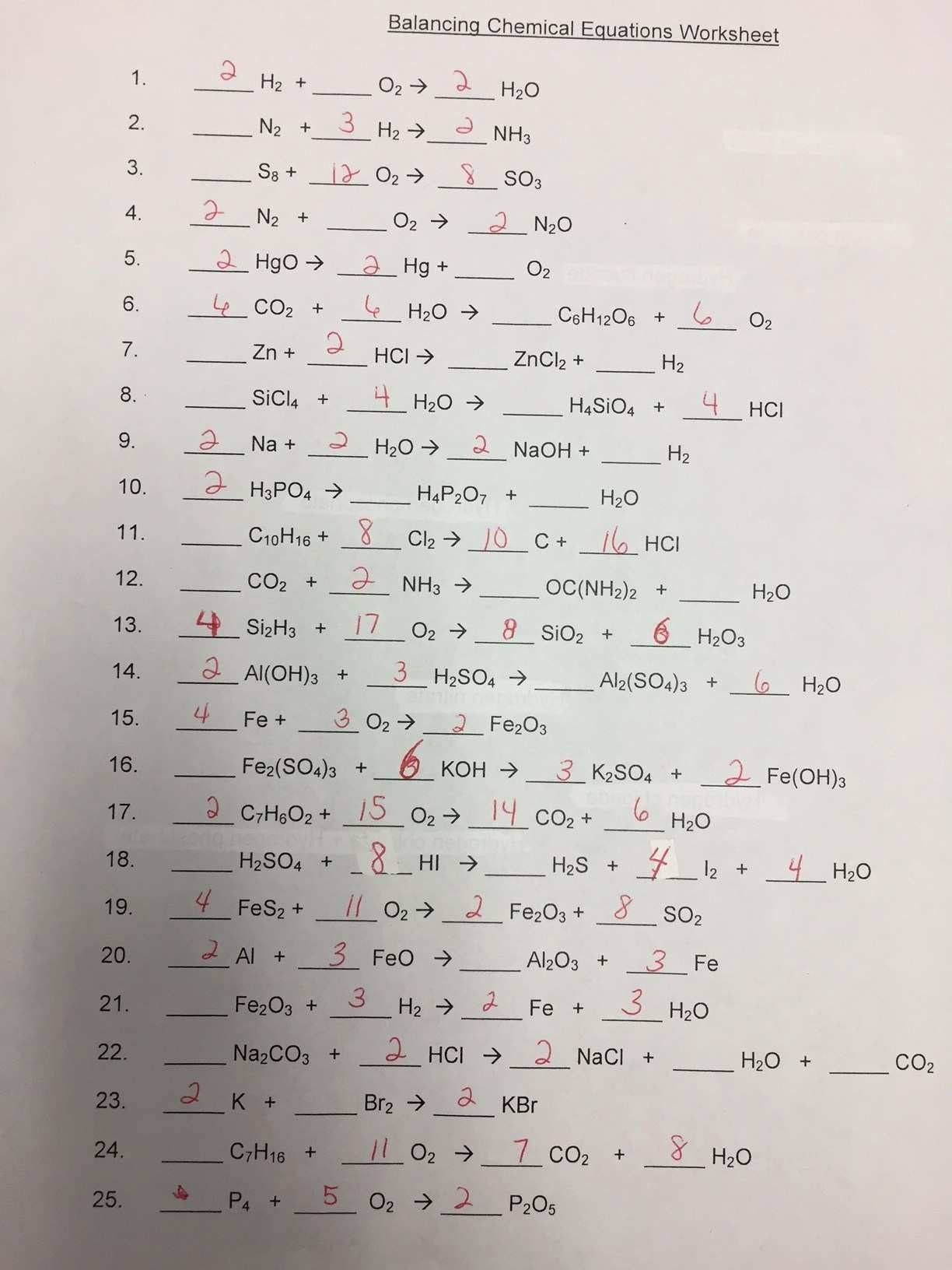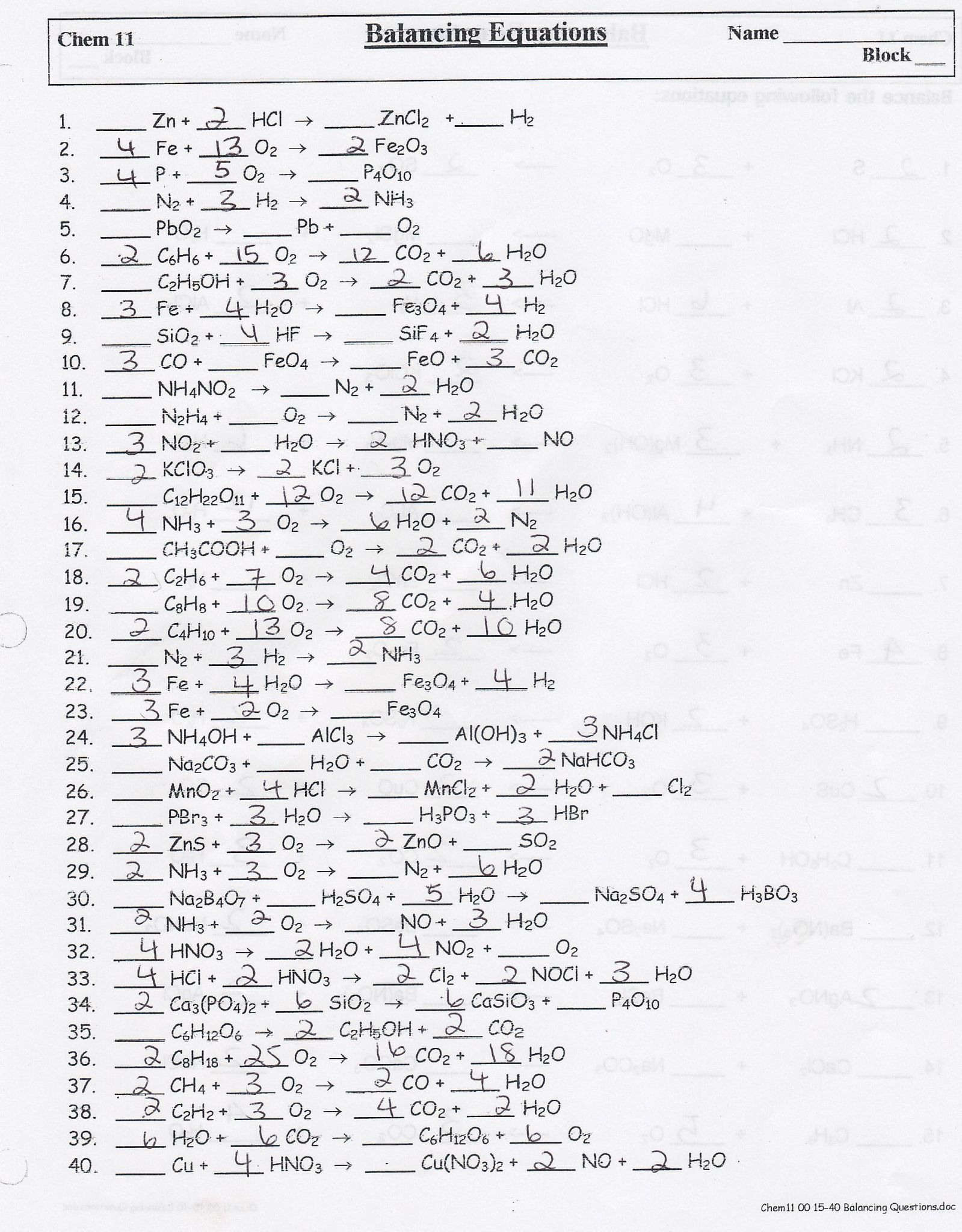Balancing chemical equations is a fundamental skill in chemistry. It ensures that the law of conservation of mass is obeyed, which dictates that matter cannot be created or destroyed in a chemical reaction. Essentially, a balanced equation shows the same number of atoms of each element on both the reactant and product sides. This process can seem daunting at first, but with practice and a systematic approach, it becomes manageable. The goal is to find coefficients (the numbers placed in front of chemical formulas) that equalize the number of each type of atom on both sides of the equation.
One common method for balancing equations involves trial and error, but a more structured approach often proves more efficient, especially for complex equations. This approach typically starts by identifying the most complex molecule (the one with the most different types of atoms). Then, you start balancing the elements present in that molecule one by one, working your way through the equation. Remember that you can only change the coefficients in front of the chemical formulas; you cannot change the subscripts within the formulas themselves. Changing the subscripts would change the identity of the substance, which is not what we want to do.
When faced with polyatomic ions (groups of atoms that act as a single unit, like sulfate (SO42-) or nitrate (NO3–)), try to balance them as a single unit if they appear unchanged on both sides of the equation. This often simplifies the balancing process significantly. Also, be mindful of elements that appear only once on each side of the equation. These are usually a good starting point as they are often easier to balance initially.
Many students find it helpful to keep track of the number of atoms of each element on both sides of the equation in a table. This makes it easy to see at a glance which elements still need to be balanced. After balancing, always double-check your work to ensure that the number of atoms of each element is the same on both sides. It’s also good practice to reduce the coefficients to their simplest whole-number ratio, if possible.
To aid in your journey towards mastering this skill, we provide below the answer key to a typical balancing equations worksheet. Remember that understanding the *process* of balancing is more important than just memorizing the answers. Use the answer key to check your work, identify mistakes, and learn from them. Don’t be discouraged if you struggle at first; persistence and practice are key!
Balancing Equations Worksheet Answer Key
Example Balancing Equations
- Balancing equations requires practice, so below is a list to help you see if you are on the right track. This is a skill used throughout chemistry and beyond!
Answers to the Balancing Equations Worksheet
Below are the answers to a common balancing equations worksheet. It’s important to understand the process, not just memorize the answers, so use this as a tool to learn and improve.
- 1. 2 H2 + O2 → 2 H2O
- 2. S8 + 12 O2 → 8 SO3
- 3. 2 HgO → 2 Hg + O2
- 4. Zn + 2 HCl → ZnCl2 + H2
- 5. 2 NaCl → 2 Na + Cl2
- 6. 4 Al + 3 O2 → 2 Al2O3
- 7. C + O2 → CO2
- 8. 2 KClO3 → 2 KCl + 3 O2
- 9. Mg + 2 HCl → MgCl2 + H2
- 10. 2 H2O → 2 H2 + O2
- 11. C3H8 + 5 O2 → 3 CO2 + 4 H2O
- 12. 2 C4H10 + 13 O2 → 8 CO2 + 10 H2O
- 13. C2H5OH + 3 O2 → 2 CO2 + 3 H2O
- 14. Fe + 2 HCl → FeCl2 + H2
- 15. 2 Ag2O → 4 Ag + O2
- 16. 2 N2 + 5 O2 → 2 N2O5
- 17. 2 H2O2 → 2 H2O + O2
- 18. P4 + 5 O2 → 2 P2O5
- 19. CH4 + 2 O2 → CO2 + 2 H2O
- 20. H2SO4 + 2 NaOH → Na2SO4 + 2 H2O
Remember, practice makes perfect. Use this answer key to check your work and identify areas where you may need more practice. Good luck!
If you are looking for 49 Balancing Chemical Equations Worksheets [with Answers] you’ve came to the right place. We have 22 Pics about 49 Balancing Chemical Equations Worksheets [with Answers] like 49 Balancing Chemical Equations Worksheets [with Answers], Balancing Equations Worksheet 1 — db-excel.com and also 49 Balancing Chemical Equations Worksheets [with Answers]. Here you go:
49 Balancing Chemical Equations Worksheets [with Answers]
![49 Balancing Chemical Equations Worksheets [with Answers]](https://templatelab.com/wp-content/uploads/2017/01/balancing-equations-26.jpg)
templatelab.com
Free Balancing Chemical Equations Worksheet Answer Key – Worksheets Library

worksheets.clipart-library.com
49 Balancing Chemical Equations Worksheets [with Answers]
![49 Balancing Chemical Equations Worksheets [with Answers]](https://templatelab.com/wp-content/uploads/2017/01/balancing-equations-03.jpg)
templatelab.com
49 Balancing Chemical Equations Worksheets [with Answers]
![49 Balancing Chemical Equations Worksheets [with Answers]](https://templatelab.com/wp-content/uploads/2017/01/balancing-equations-28.jpg)
templatelab.com
49 Balancing Chemical Equations Worksheets [with Answers] – Worksheets
![49 Balancing Chemical Equations Worksheets [with Answers] - Worksheets](https://worksheets.clipart-library.com/images2/balancing-chemical-equations-worksheet-1-answer-key/balancing-chemical-equations-worksheet-1-answer-key-30.png)
worksheets.clipart-library.com
Worksheet Balancing Equations W/ Answers – Writing And Balancing

www.studocu.com
49 Balancing Chemical Equations Worksheets [with Answers]
![49 Balancing Chemical Equations Worksheets [with Answers]](https://templatelab.com/wp-content/uploads/2017/01/balancing-equations-37.jpg)
templatelab.com
Balancing Chemical Equations Worksheet – Laney Lee – Worksheets Library

worksheets.clipart-library.com
Balancing Equations Worksheet Library — Mashup Math

www.mashupmath.com
Identifying Reaction Types And Balancing Equations Answer Ke

sluogtise9tdblearning.z13.web.core.windows.net
Balancing Equations Worksheets 1 Answer Key Balancing — Db-excel.com

db-excel.com
49 Balancing Chemical Equations Worksheets [with Answers]
![49 Balancing Chemical Equations Worksheets [with Answers]](http://templatelab.com/wp-content/uploads/2017/01/balancing-equations-04.jpg)
templatelab.com
Balancing Equations Worksheet Gcse Chemistry

printableuhrik5w.z22.web.core.windows.net
50 Balancing Equations Worksheet Answer Key

chessmuseum.org
Worksheet 10 Math Skills Balancing Chemical Equations Answer Key

www.skillsworksheets.com
Balancing Chemical Equations Worksheet 2 Answer Key – Printable Word

davida.davivienda.com
Chemistry Balancing Chemical Equations Worksheet 1 Answer Key

myans.bhantedhammika.net
Balance Chemical Equations Worksheet 3 Answer Key – Science Notes And

sciencenotes.org
Balancing Equations Worksheet Library — Mashup Math

www.mashupmath.com
Free Balancing Chemical Equations Worksheet Answer Key – Worksheets Library

worksheets.clipart-library.com
Balancing Chemical Equations Worksheet Answer Key 1 25 — Db-excel.com

db-excel.com
Balancing Equations Worksheet 1 — Db-excel.com

db-excel.com
49 balancing chemical equations worksheets [with answers]. Worksheet balancing equations w/ answers. worksheet 10 math skills balancing chemical equations answer key …